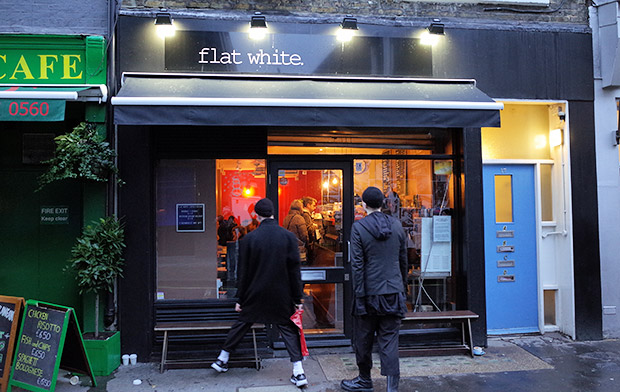The Rise of Dirty Coffee in Specialty Coffee Culture
If you’ve spent any time in the world of specialty coffee, you’ve likely heard the buzz around “dirty coffee.” This intriguing drink is making waves, especially in the niche market of coffee connoisseurs who are always on the lookout for new, creative ways to enjoy their espresso. But what exactly is dirty coffee, and why has it become such a beloved staple in cafes worldwide?
At its core, dirty coffee offers a stunning contrast—both visually and in terms of flavor—by layering cold milk with hot espresso. As the espresso trickles into the milk, it creates beautiful, marbled patterns that are as Instagram-worthy as they are delicious. The mix of hot and cold elements, coupled with the smooth milk and bold espresso, delivers a unique sensory experience that coffee lovers can’t seem to get enough of.
What’s more, dirty coffee’s versatility makes it appealing to both traditionalists and experimentalists in the coffee scene. Whether you’re someone who prefers the robust taste of a classic espresso or you’re looking for something a bit more adventurous, dirty coffee strikes the perfect balance. It’s no surprise that this drink has evolved into a signature offering at many specialty coffee shops around the globe.
In this article, we’ll explore what makes dirty coffee so special, its origins, how to make it at home, and the variations that are captivating coffee lovers everywhere. By the end, you’ll not only understand why this drink is here to stay but also how you can enjoy your own perfect cup of dirty coffee.
What is Dirty Coffee? The Basics of This Signature Beverage
Dirty coffee is one of those drinks that catches your eye the moment it’s served. The distinct layers of cold milk and hot espresso are visually striking, but its appeal goes far beyond aesthetics. Dirty coffee is typically made by slowly pouring a shot (or two) of espresso over a base of chilled milk, creating a drink that offers a delightful contrast in both temperature and texture.
The cold milk forms the base of the drink, providing a creamy and smooth foundation, while the hot espresso adds a bold, rich flavor that floats on top. The name “dirty coffee” comes from the way the espresso “dirties” the milk, creating streaks of deep brown that swirl and mix as you sip.
What makes dirty coffee truly special is how it balances the intensity of espresso with the soothing qualities of cold milk. For specialty coffee lovers, it’s a perfect way to enjoy the robust flavor of espresso without the overwhelming strength that often comes with a straight shot. Whether served in a clear glass to highlight its beautiful layers or sipped slowly to appreciate the evolving taste profile, dirty coffee is both simple and sophisticated.
The Origins of Dirty Coffee: How It Became a Trend
Dirty coffee may seem like a modern invention, but its roots can be traced back to Asia, particularly in Taiwan and Japan. These regions are known for their innovative and visually appealing coffee presentations, and dirty coffee quickly gained popularity among coffee aficionados seeking something new.
It wasn’t long before the trend spread globally, largely thanks to social media platforms like Instagram. Coffee lovers couldn’t resist posting photos of their beautifully layered drinks, and as the images went viral, more cafes around the world began adding dirty coffee to their menus.
Baristas have also played a significant role in popularizing dirty coffee. The drink offers them a canvas for creativity, allowing them to experiment with different milk types, brewing methods, and even adding flavored syrups or spices to create unique variations. Today, dirty coffee can be found in specialty cafes from New York to Melbourne, each with its own twist on the classic drink.
How to Make Dirty Coffee at Home: A Step-by-Step Guide
For those who want to enjoy dirty coffee in the comfort of their home, the good news is that it’s incredibly simple to make. Here’s how you can create this signature beverage with just a few ingredients and tools:
Ingredients:
1 shot of espresso (use freshly ground coffee beans for the best flavor)
½ cup of cold milk (whole milk is recommended, but you can use alternatives like oat or almond milk)
Ice (optional, for an even cooler drink)
Equipment:
Espresso machine (or a Moka pot or Aeropress for a strong coffee base)
A glass or cup (preferably clear, to showcase the layers)
Step-by-Step Process:
Chill the milk: Pour cold milk into a glass and place it in the fridge for about 10 minutes to ensure it’s well-chilled. If you prefer iced dirty coffee, add a few ice cubes to the glass.
Brew the espresso: Use your espresso machine or preferred brewing method to pull a fresh shot of espresso.
Pour the espresso: Slowly pour the hot espresso over the cold milk. The espresso should float on top, creating the “dirty” effect as it slowly mixes with the milk.
Enjoy: Sip slowly, and savor how the flavors evolve as the hot espresso mixes with the cold milk.
For those looking to customize their dirty coffee, try experimenting with different milk types or adding a dash of flavored syrup (vanilla, caramel, or hazelnut work wonderfully). You can also play with the espresso-to-milk ratio to find the perfect balance for your taste.
Variations of Dirty Coffee: Unique Twists on a Signature Drink
One of the reasons dirty coffee has gained such widespread popularity is its adaptability. While the classic version features espresso and milk, there are several exciting variations that add new dimensions to the drink:
Dirty Matcha:
For tea lovers, dirty matcha is a creative twist that replaces espresso with matcha powder. Like dirty coffee, cold milk is used as the base, and matcha, whisked with hot water, is poured over it. The result is a vibrant green and white layered drink that offers the earthy bitterness of matcha balanced by the creaminess of milk.
Iced Dirty Coffee:
For those who love their coffee chilled, iced dirty coffee is an excellent choice. Simply add ice cubes to the milk before pouring the espresso over it. This variation is particularly refreshing on a hot day and still provides that bold espresso punch.
Dirty Chai:
Dirty chai combines the spiced flavors of chai tea with the richness of espresso. This variation uses chai concentrate or freshly brewed chai as the base instead of milk. A shot of espresso is poured over the chai, creating a drink that’s warm, spicy, and caffeinated—perfect for those who enjoy complex flavors.
These variations highlight just how versatile dirty coffee can be, offering something for everyone, whether you’re a fan of coffee, tea, or adventurous combinations of both.
Why Specialty Coffee Lovers Are Embracing Dirty Coffee
Specialty coffee lovers are drawn to dirty coffee for several reasons, starting with its sensory appeal. The drink’s unique visual presentation is a treat for the eyes, with its beautiful contrast of white milk and dark espresso. The aroma of freshly brewed espresso is also enticing, and the combination of hot and cold elements creates a dynamic drinking experience.
Additionally, dirty coffee fits perfectly into the slow coffee movement, which emphasizes savoring every aspect of the coffee experience. Unlike a quick shot of espresso, dirty coffee is meant to be enjoyed slowly, allowing the flavors to blend and change as you drink. The interplay of temperatures and textures makes each sip slightly different from the last.
Beyond that, dirty coffee has become a communal experience in specialty coffee shops. Many cafes use it as a way to engage customers, offering them a drink that’s not only delicious but also visually striking. As more people share their dirty coffee experiences on social media, the drink has solidified its place in the hearts of specialty coffee enthusiasts.
Where to Find the Best Dirty Coffee: Cafe Recommendations
If you’re eager to try dirty coffee for yourself, there are plenty of cafes worldwide that specialize in this unique beverage. Here are a few recommendations for where to find the best dirty coffee:
Coffee Collective (Copenhagen, Denmark):
Known for its commitment to quality, this cafe offers a beautifully crafted dirty coffee that’s a must-try for visitors.
Arabica (Kyoto, Japan):
This global coffee chain started in Japan and is famed for its minimalist approach and expertly brewed dirty coffee.
Blue Bottle Coffee (Various Locations):
Offering a blend of precision and artistry, Blue Bottle’s take on dirty coffee is sure to impress.
Heart Coffee Roasters (Portland, USA):
A haven for specialty coffee lovers, this Portland-based cafe serves a refreshing take on dirty coffee that’s perfect for both locals and tourists.
Ozone Coffee Roasters (London, UK):
With its focus on sustainability and innovation, Ozone Coffee’s dirty coffee is a crowd favorite.
For those who prefer to stay local, many independent specialty coffee shops now feature dirty coffee on their menus. Be sure to ask your favorite barista if they can whip up this trendy drink.
Is Dirty Coffee Here to Stay?
Dirty coffee has proven to be more than just a fleeting trend in the coffee world. Its unique presentation, rich flavor profile, and adaptability have earned it a permanent spot on the menus of specialty coffee shops worldwide. As more people discover this signature beverage, its popularity continues to grow, ensuring that dirty coffee will remain a favorite among coffee lovers for years to come.
So, whether you’re enjoying it at a local cafe or trying your hand at making it at home, dirty coffee is a drink worth savoring. Next time you’re in the mood for something different, give it a try—you might just find your new favorite coffee indulgence.
FAQ: Frequently Asked Questions About Dirty Coffee
Is dirty coffee the same as an iced latte?
No, dirty coffee is not the same as an iced latte. While both drinks involve espresso and milk, dirty coffee is distinct because it layers cold milk with hot espresso, whereas an iced latte typically involves cold milk mixed with chilled espresso and ice.
Can I make dirty coffee without an espresso machine?
Yes, you can make dirty coffee without an espresso machine by using alternatives like a Moka pot, Aeropress, or even strong brewed coffee. While the flavor may differ slightly, these methods can still provide the robust coffee base needed for dirty coffee.
What’s the best type of milk to use for dirty coffee?
Whole milk is traditionally used for its creaminess, but dirty coffee can be made with various milk alternatives like almond, oat, or soy milk. Each type of milk will slightly alter the flavor and texture of the drink, so feel free to experiment based on your preference.
How should dirty coffee be served?
Dirty coffee is typically served in a clear glass to showcase its beautiful layers. The contrast between the cold milk and the hot espresso makes it visually appealing, which is part of its charm.
Can I add flavors to dirty coffee?
Yes! Many people enjoy adding flavored syrups such as vanilla, caramel, or hazelnut to their dirty coffee. You can also experiment with spices like cinnamon or cardamom for an added twist.

